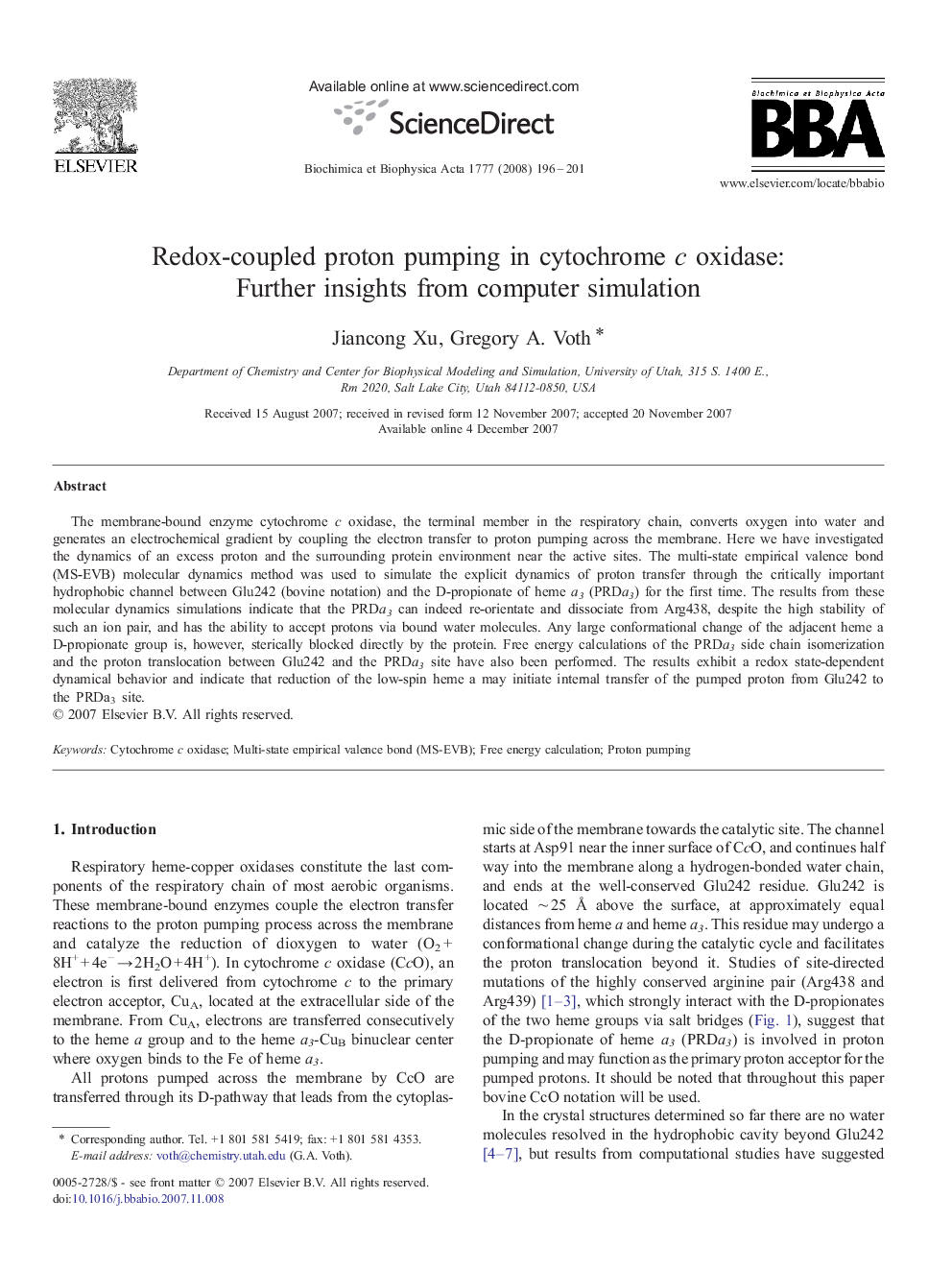| Article ID | Journal | Published Year | Pages | File Type |
|---|---|---|---|---|
| 1943420 | Biochimica et Biophysica Acta (BBA) - Bioenergetics | 2008 | 6 Pages |
The membrane-bound enzyme cytochrome c oxidase, the terminal member in the respiratory chain, converts oxygen into water and generates an electrochemical gradient by coupling the electron transfer to proton pumping across the membrane. Here we have investigated the dynamics of an excess proton and the surrounding protein environment near the active sites. The multi-state empirical valence bond (MS-EVB) molecular dynamics method was used to simulate the explicit dynamics of proton transfer through the critically important hydrophobic channel between Glu242 (bovine notation) and the D-propionate of heme a3 (PRDa3) for the first time. The results from these molecular dynamics simulations indicate that the PRDa3 can indeed re-orientate and dissociate from Arg438, despite the high stability of such an ion pair, and has the ability to accept protons via bound water molecules. Any large conformational change of the adjacent heme a D-propionate group is, however, sterically blocked directly by the protein. Free energy calculations of the PRDa3 side chain isomerization and the proton translocation between Glu242 and the PRDa3 site have also been performed. The results exhibit a redox state-dependent dynamical behavior and indicate that reduction of the low-spin heme a may initiate internal transfer of the pumped proton from Glu242 to the PRDa3 site.
